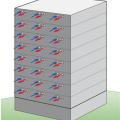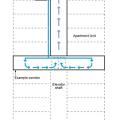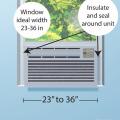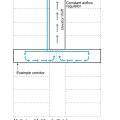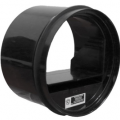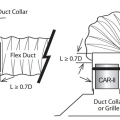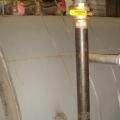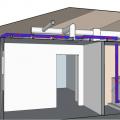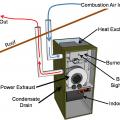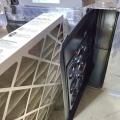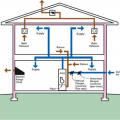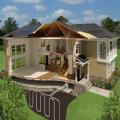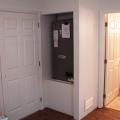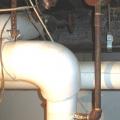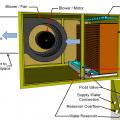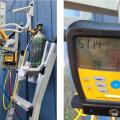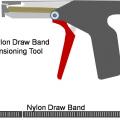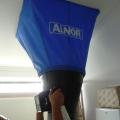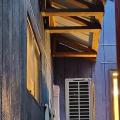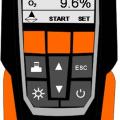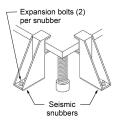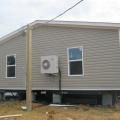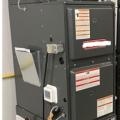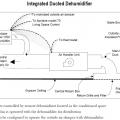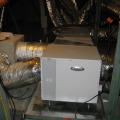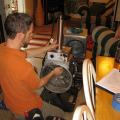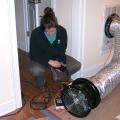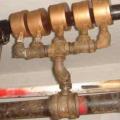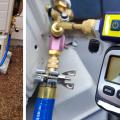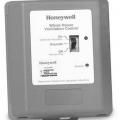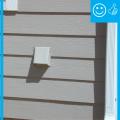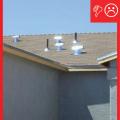Showing results 1 - 50 of 578
Individual ventilation systems for each dwelling unit in a multifamily building will require large numbers of penetrations in exterior facades
These schematics illustrate temporary deployment locations for probes during the commissioning process; these probes connect to smartphone commissioning applications.
This central ventilation system uses an energy recovery ventilator to supply air to the corridor and exhaust air from the elevator shaft of a multifamily building
A 5,000- 6,000 Btu/hr air conditioner drawing about 500 watts can be installed in one window of a designated cool room (it is important that the installation is insulated and well-sealed
A central fan-integrated supply system uses a fresh air intake ducted to the home's central furnace or air handler unit to supply fresh air throughout the home
A central rooftop fan supplies outdoor air to all floors of a multistory multifamily building, pressurizing the corridors and providing make-up air for the elevator shaft, which is depressurized by an exhaust fan.
A central rooftop fan supplies preconditioned outdoor air to every floor of a multistory multifamily building, pressurizing the corridors and providing make-up air for the elevator shaft, which is depressurized by an exhaust fan.
A constant airflow regulator is a modulating orifice that automatically regulates airflows in duct systems to constant levels
A constant airflow regulator is fitted into the neck of the supply duct to control air flow to deliver the design airflow regardless of pressure variations
A cool room should have low enough heat gains to be easily cooled by a small single-zone cooling system such as a mini-split or a window air-conditioner as shown here
A direct-vent sealed-combustion fireplace takes its combustion air directly from outside through a dedicated air inlet and vents combustion products directly outside
A direct-vent sealed-combustion furnace has dedicated pipes for combustion air and exhaust
A duct leakage test is performed on a ducted heat pump system using a duct tester (blower fan) and a digital manometer.
A ducted central return brings air from central return registers back to the air handler through insulated, air-sealed ducts
A flow grid is inserted into the filter grille/slot to directly measure airflow.
A foaming cleaner is used to clean the coils inside this ductless indoor unit; a mini-split bib surrounds the unit to contain overspray and drips
A foaming sprayer and mini-split bib are required to properly clean this ductless wall-mounted indoor unit
A fresh air inlet is ducted to the return side of the home’s central air handler; a motorized damper and electronic controls help balance the flow of fresh incoming air with controlled exhaust to meet ventilation requirements
A ground-source heat pump used a fluid flowing through pipe loops to draw heat from or discharge heat the ground to heat or cool the indoor space.
A high-efficiency heat pump is installed in a closet within this home’s conditioned space.
A modern single-inlet direct evaporative cooler draws outside air through an 8- to 12-inch media filter
A nitrogen pressure test was completed on this ductless mini-split heat pump using a digital manifold gauge.
A nylon draw band and tensioning tool are used to secure the inner coil of the pre-insulated flexible duct
A nylon draw band and tensioning tool are used to secure the inner liner of the pre-insulated flexible duct
A passive air inlet is one approach to providing makeup air when operating an exhaust-only ventilation system
A passive flow hood is used to measure the flow rate of air that passes through a ceiling-mounted exhaust fan
A permanent awning prevents snow and overflowing ice dams from causing damage to HVAC equipment below.
A portable CO monitor is used to test for ambient CO near a ventless combustion fireplace
A properly sized cold climate heat pump can meet 100% of a home’s heating load in nearly any location in the United States
A properly sized high-efficiency heat pump is located in conditioned space in a closet inside the home.
A seismic snubber is a type of bracket specifically designed to anchor heavy equipment to the floor to restrain it in the event of an earthquake.
A single ductless heat pump heats and cools the country’s first DOE Zero Energy Ready certified manufactured home.
A static pressure measurement is taken on this air handler using probes on the supply and return sides of the fan.
A supplemental dehumidifier is integrated with the home’s HVAC air handler to provide extra dehumidification when needed
A technician assembles the spray sealant injection system to seal HVAC ducts from the inside
A vacuum decay test is performed on this ductless mini-split heat pump using a digital micron gauge for accurate measurement; a deep vacuum is achieved quickly by using large diameter, vacuum-rated hoses, and removing valve cores
A ventilation controller with a manual override is located on a central air handler fan that is located in an accessible location
After securing the inner coil, cover the draw band and the seam with a generous amount of mastic
Air flow is produced when central HVAC fan is energized (set thermostat to “fan”)
